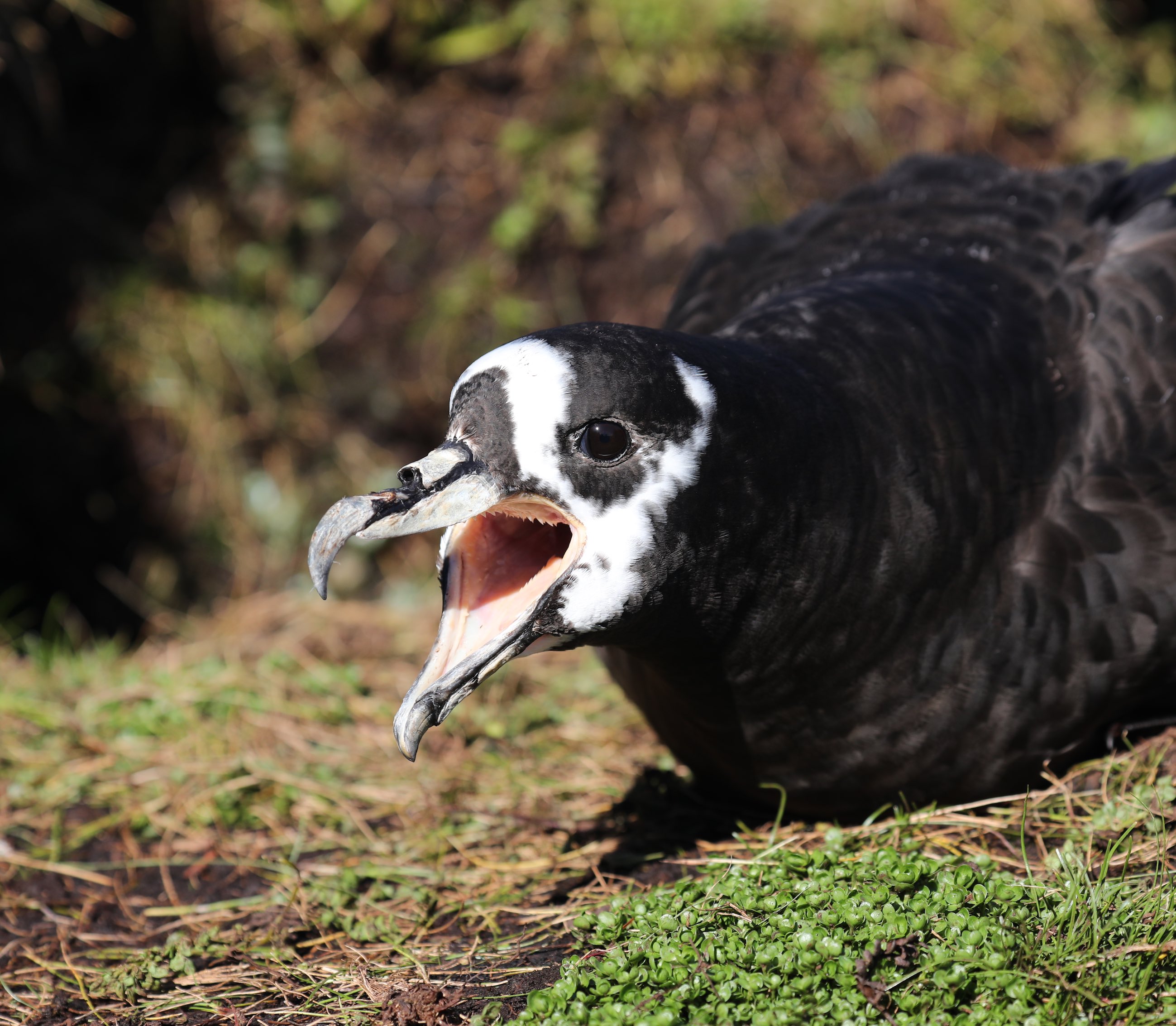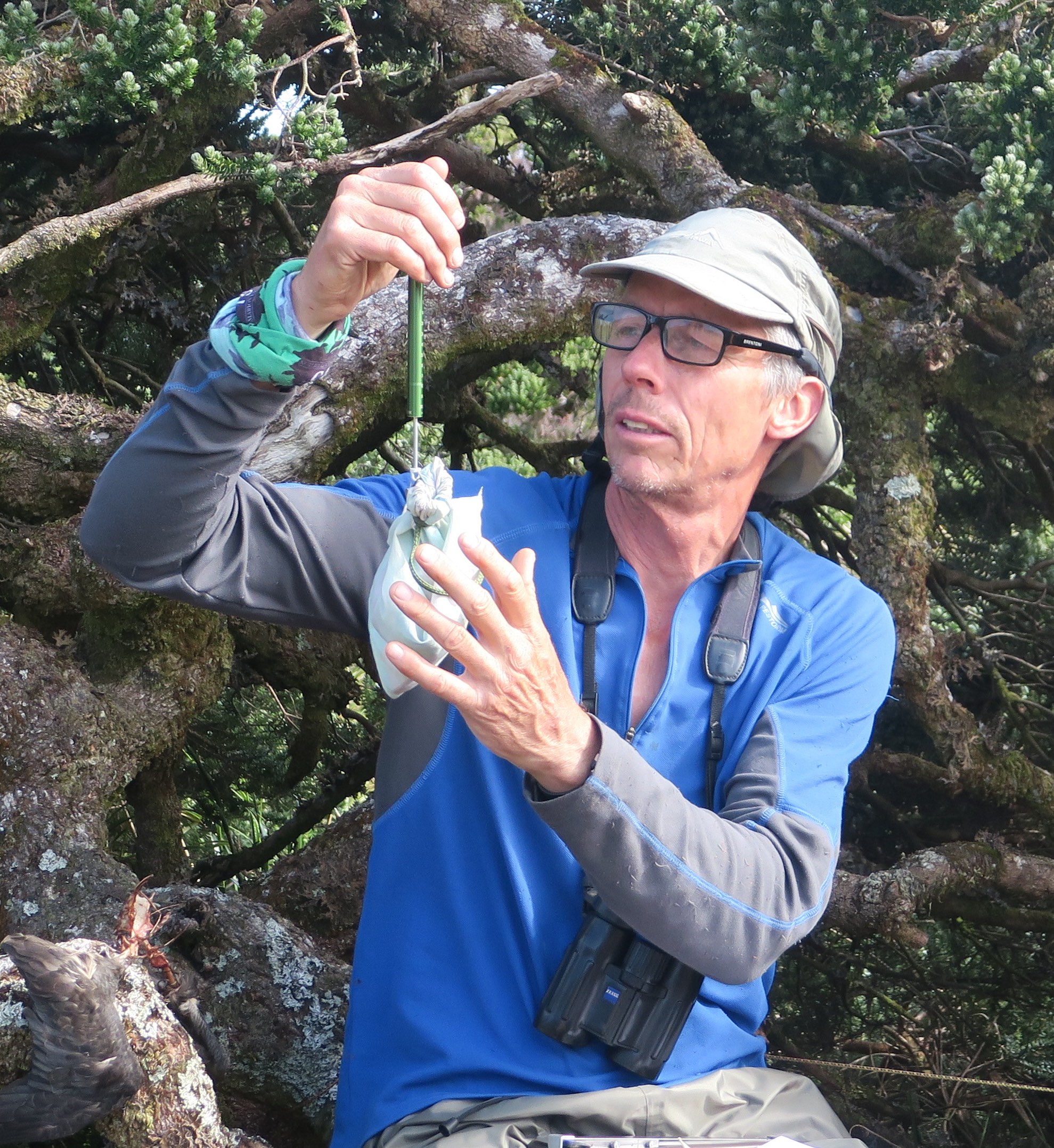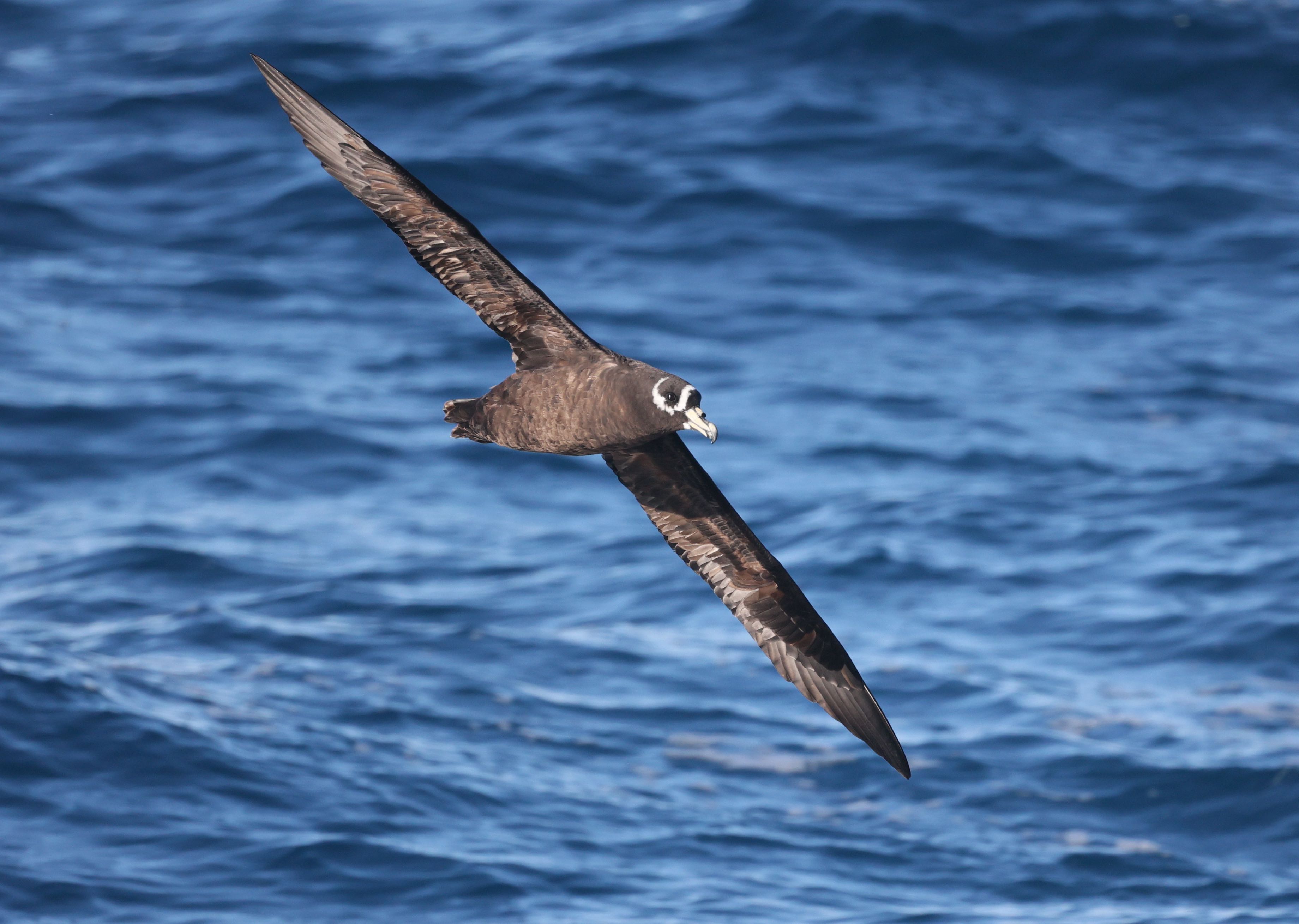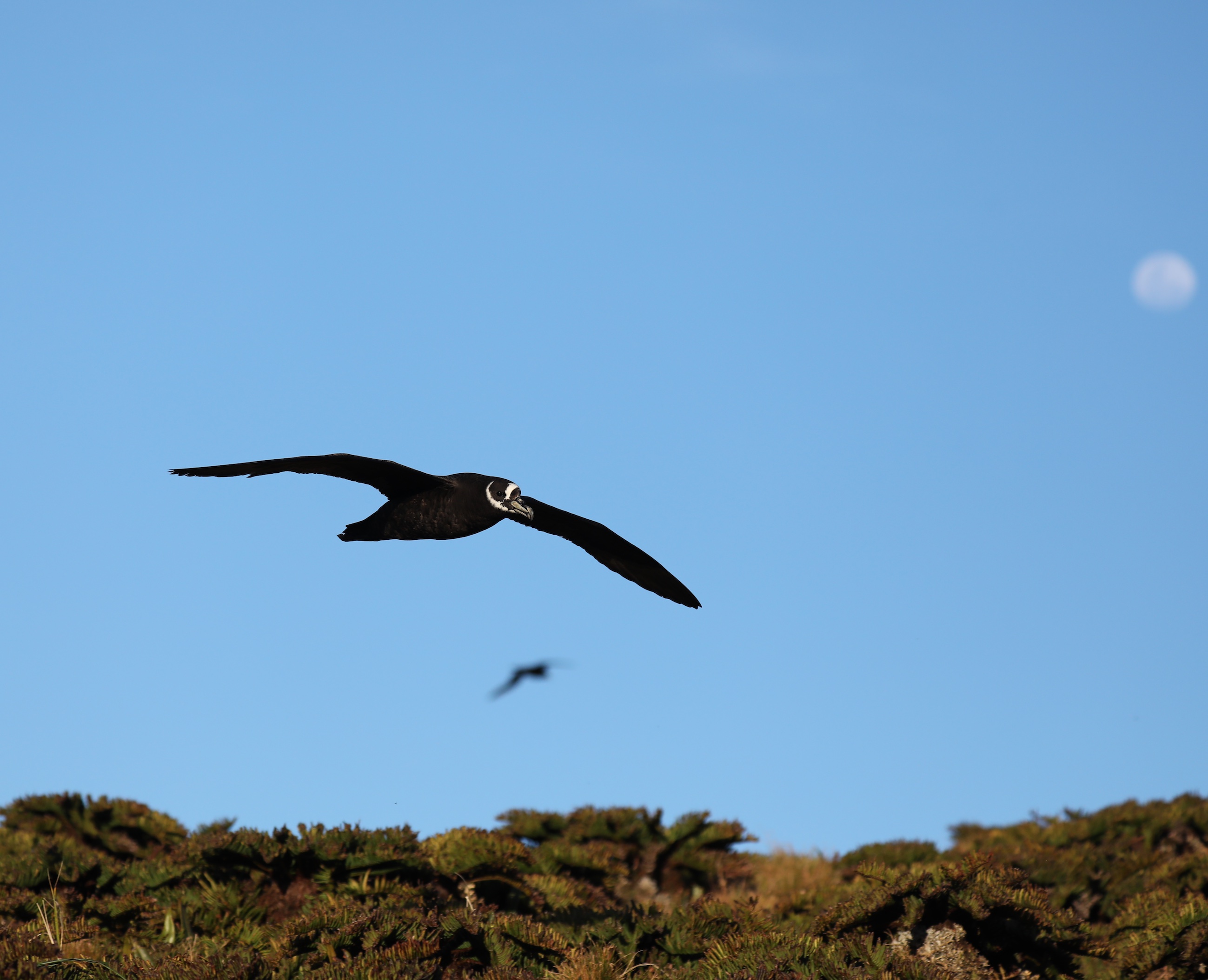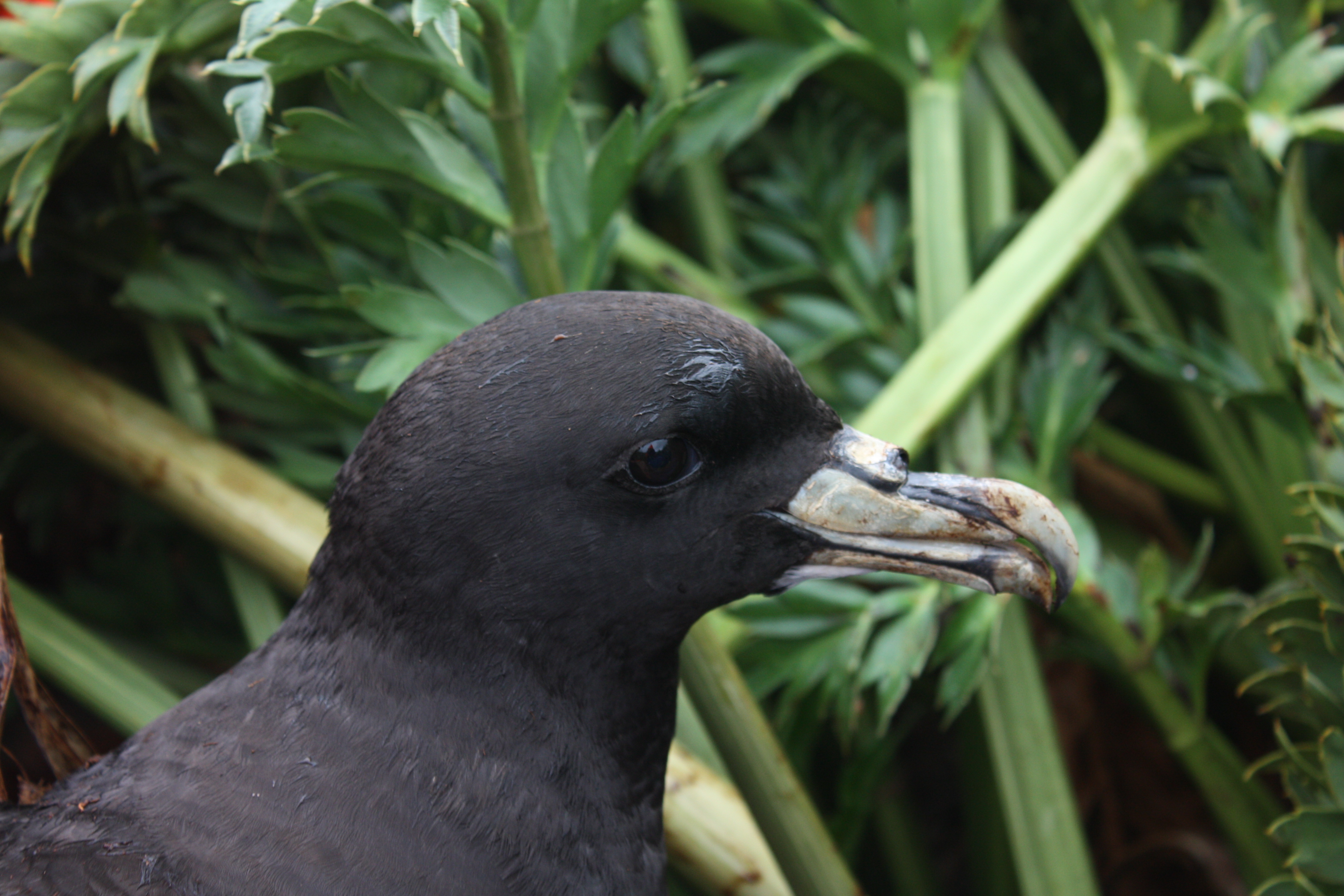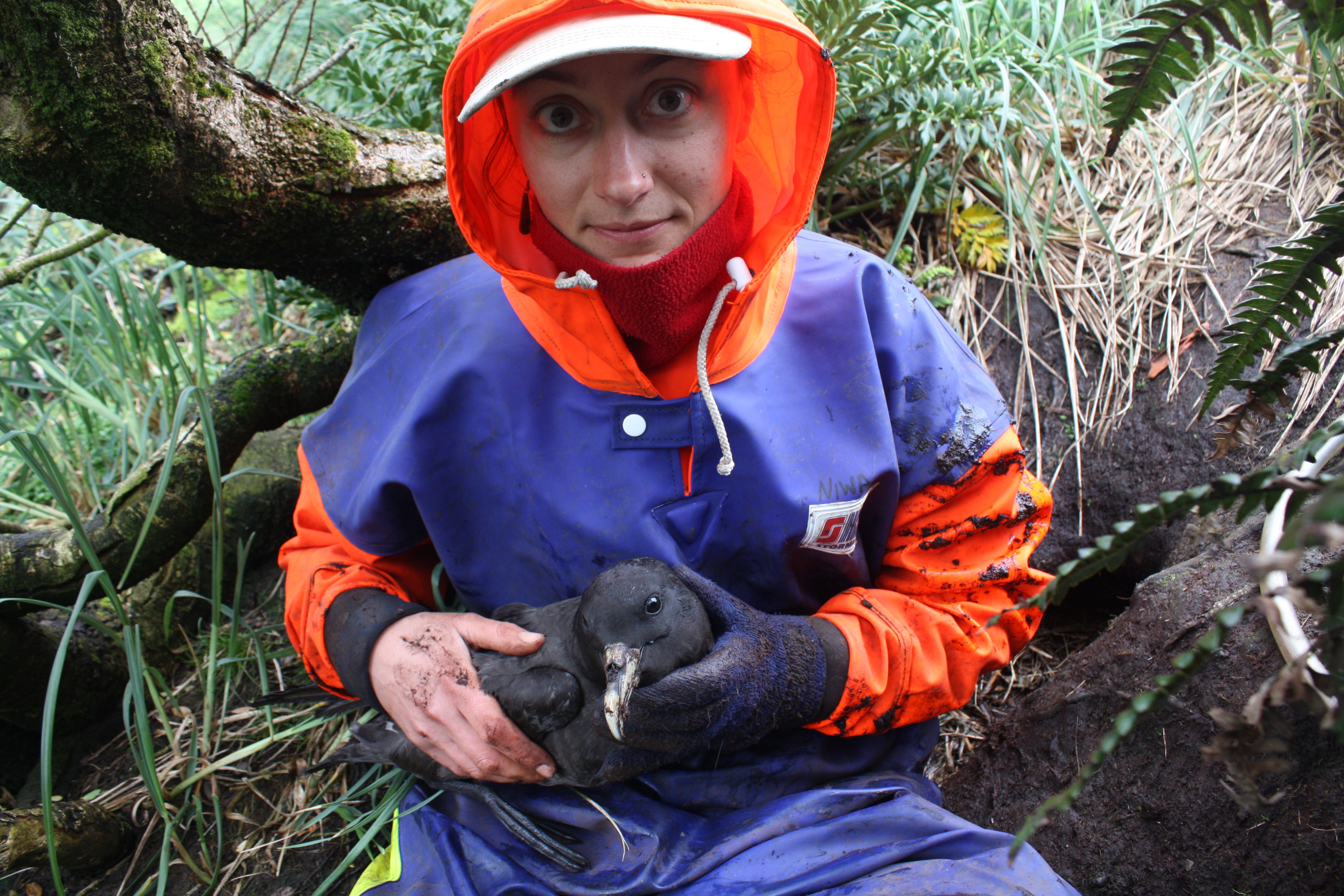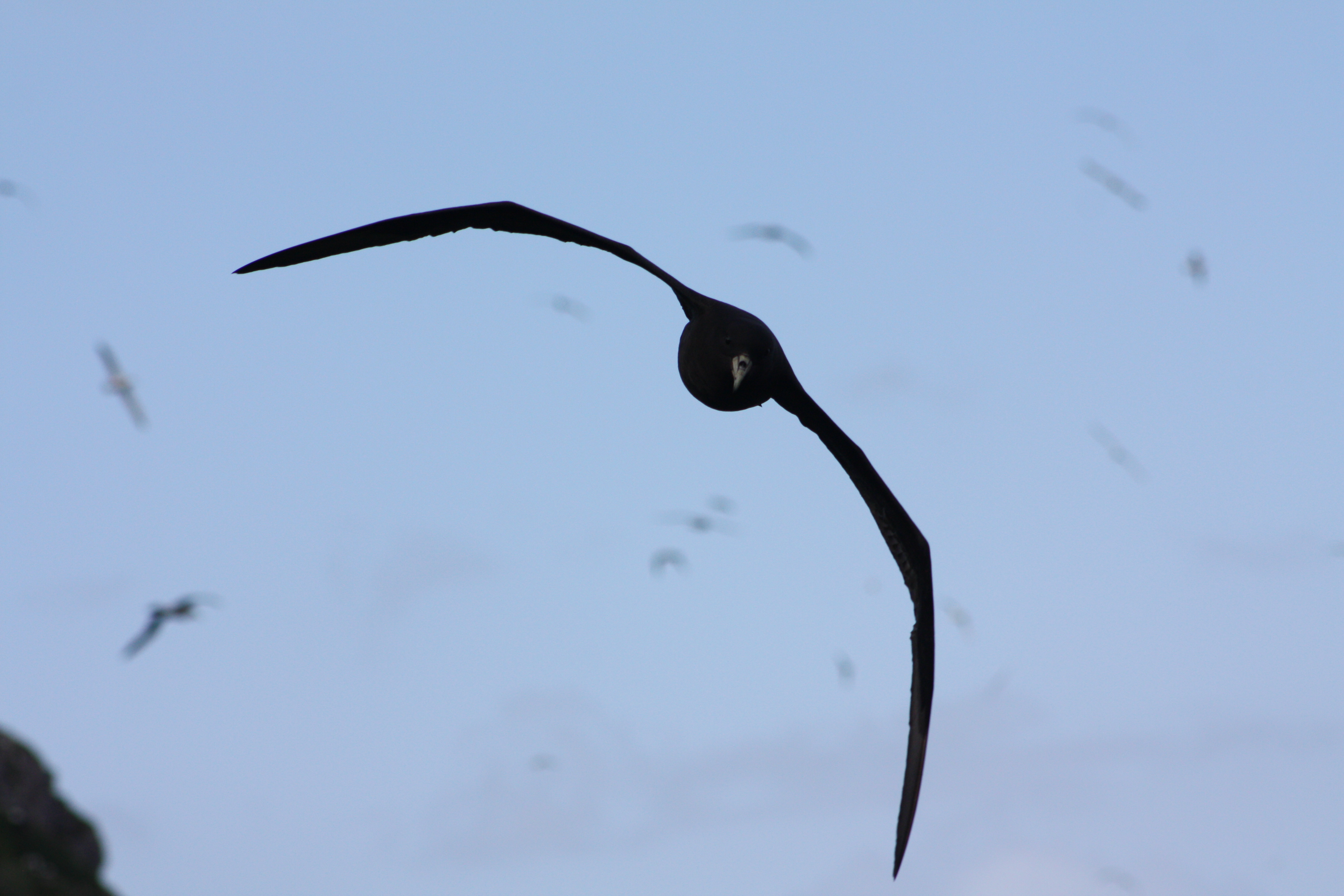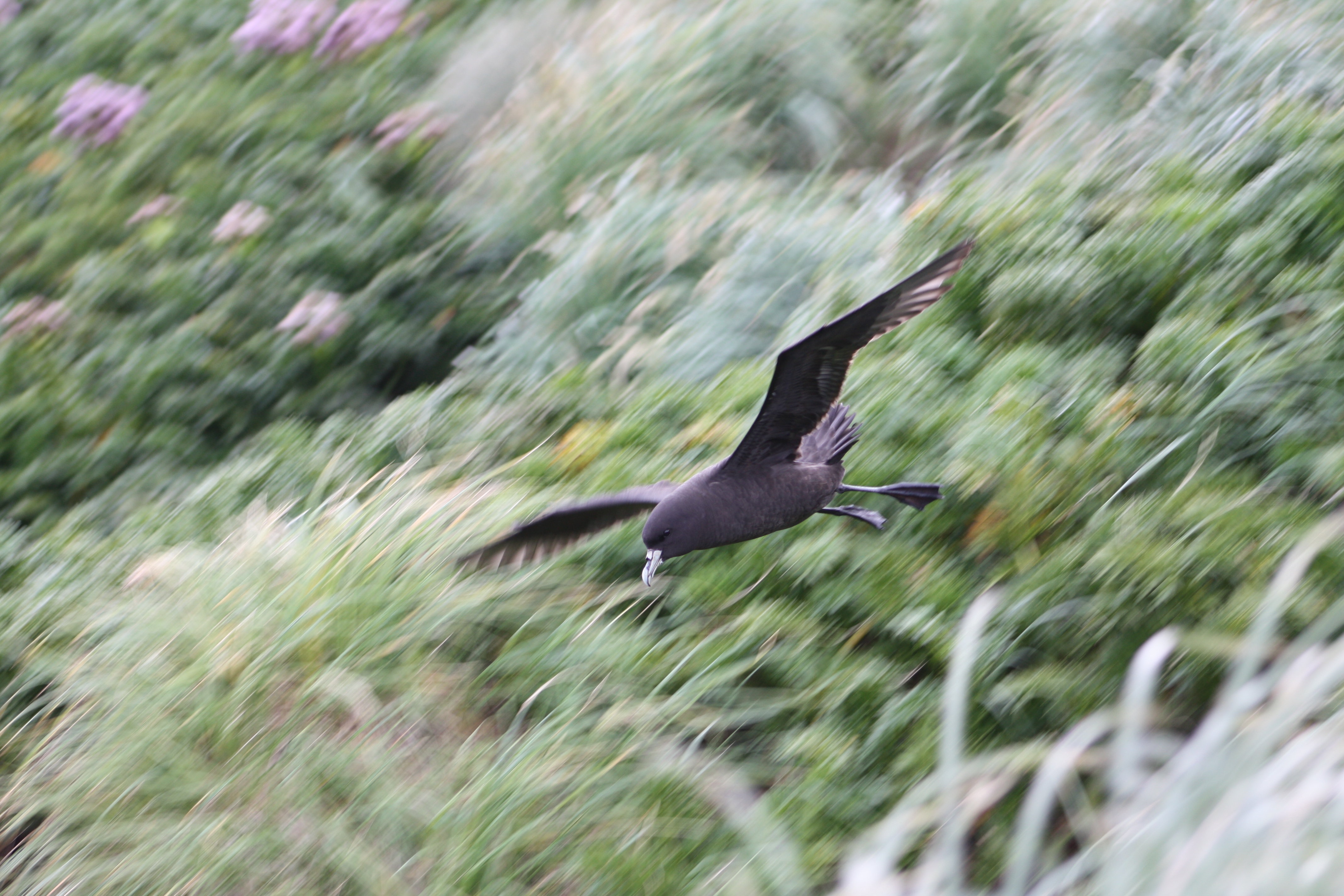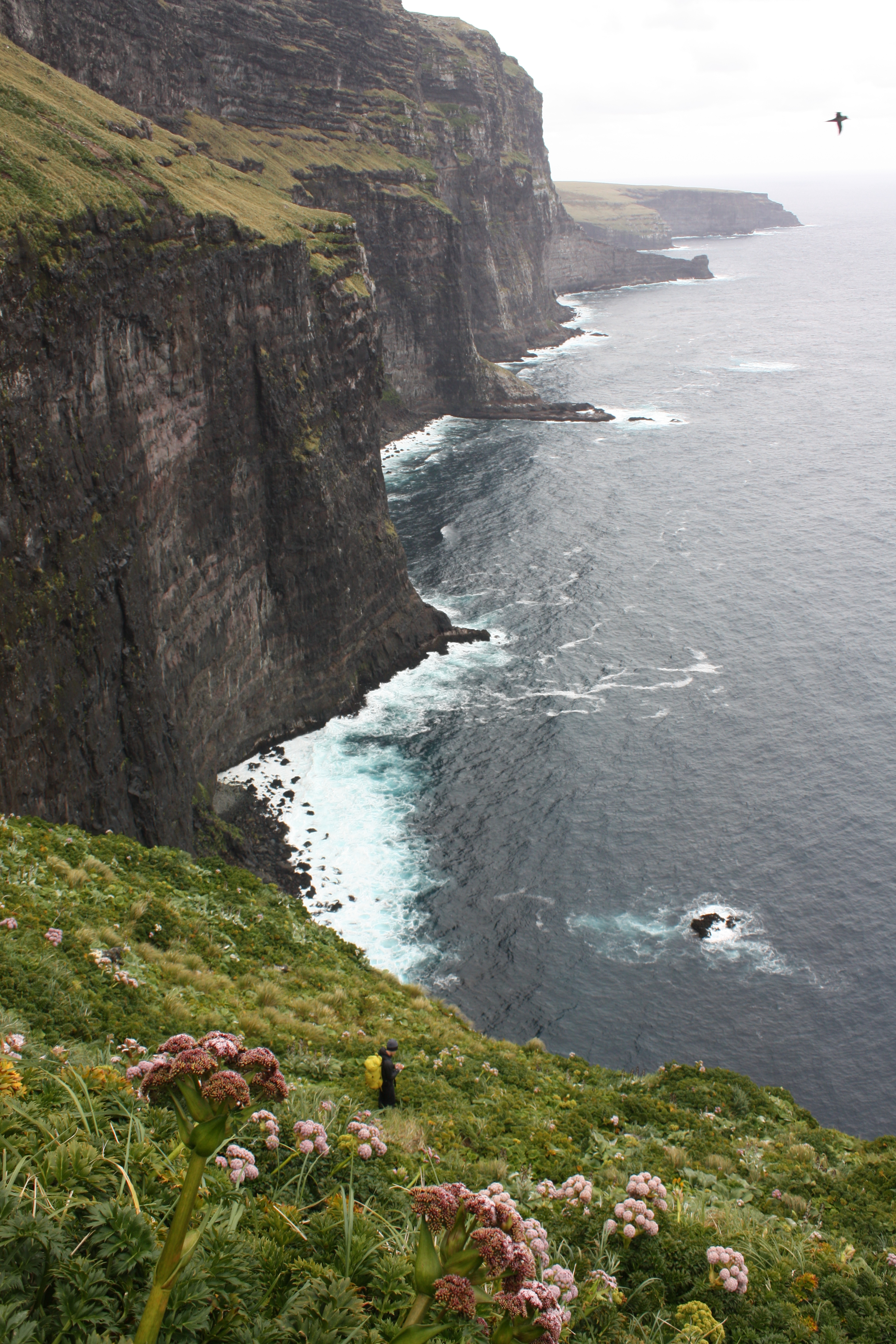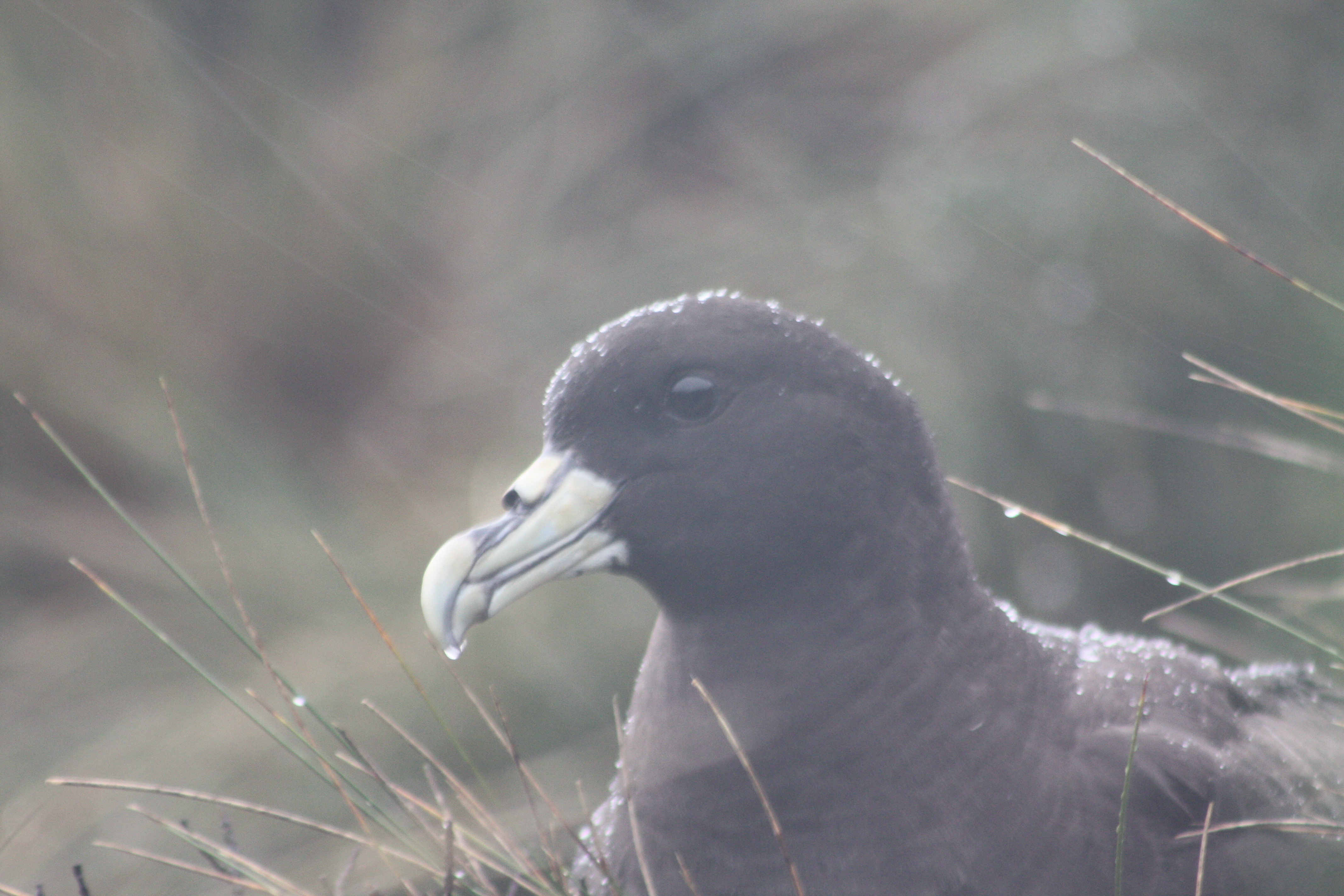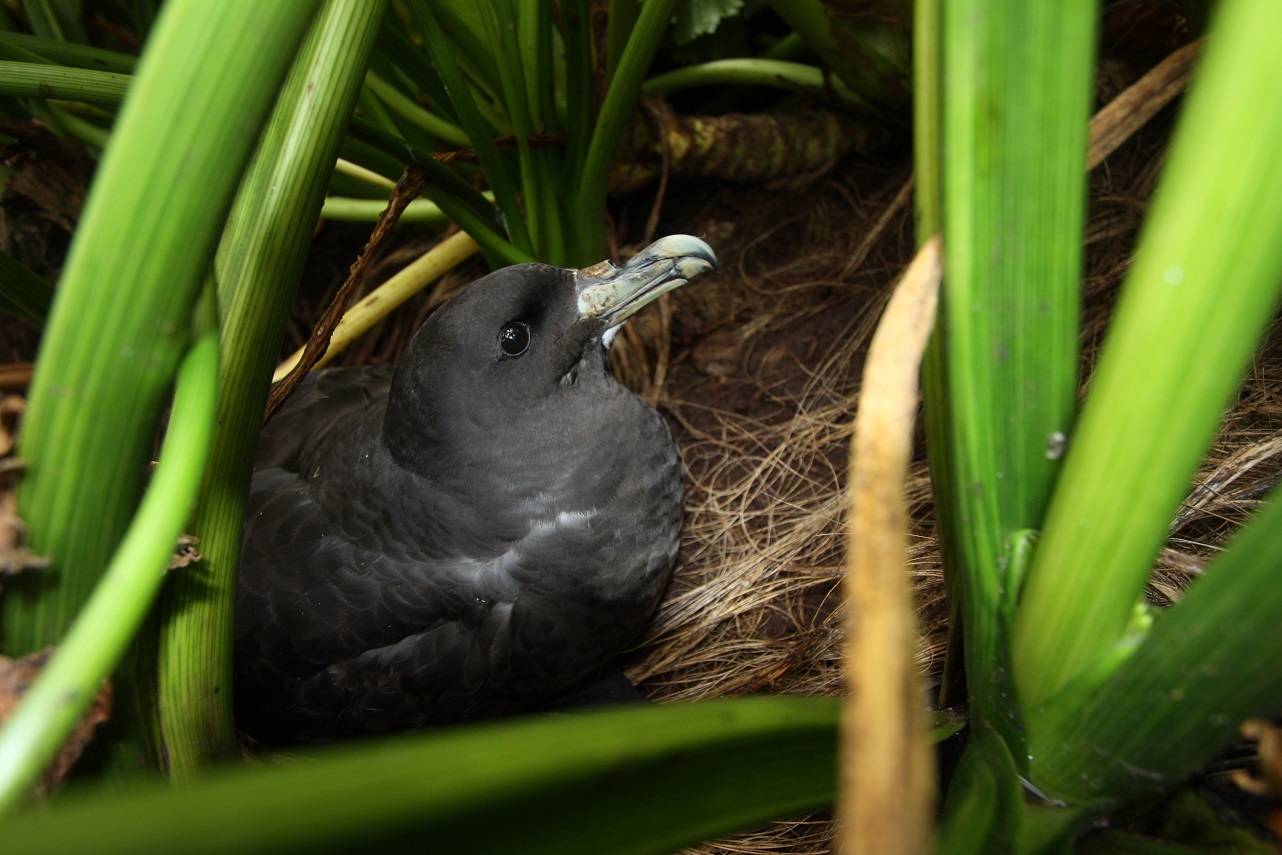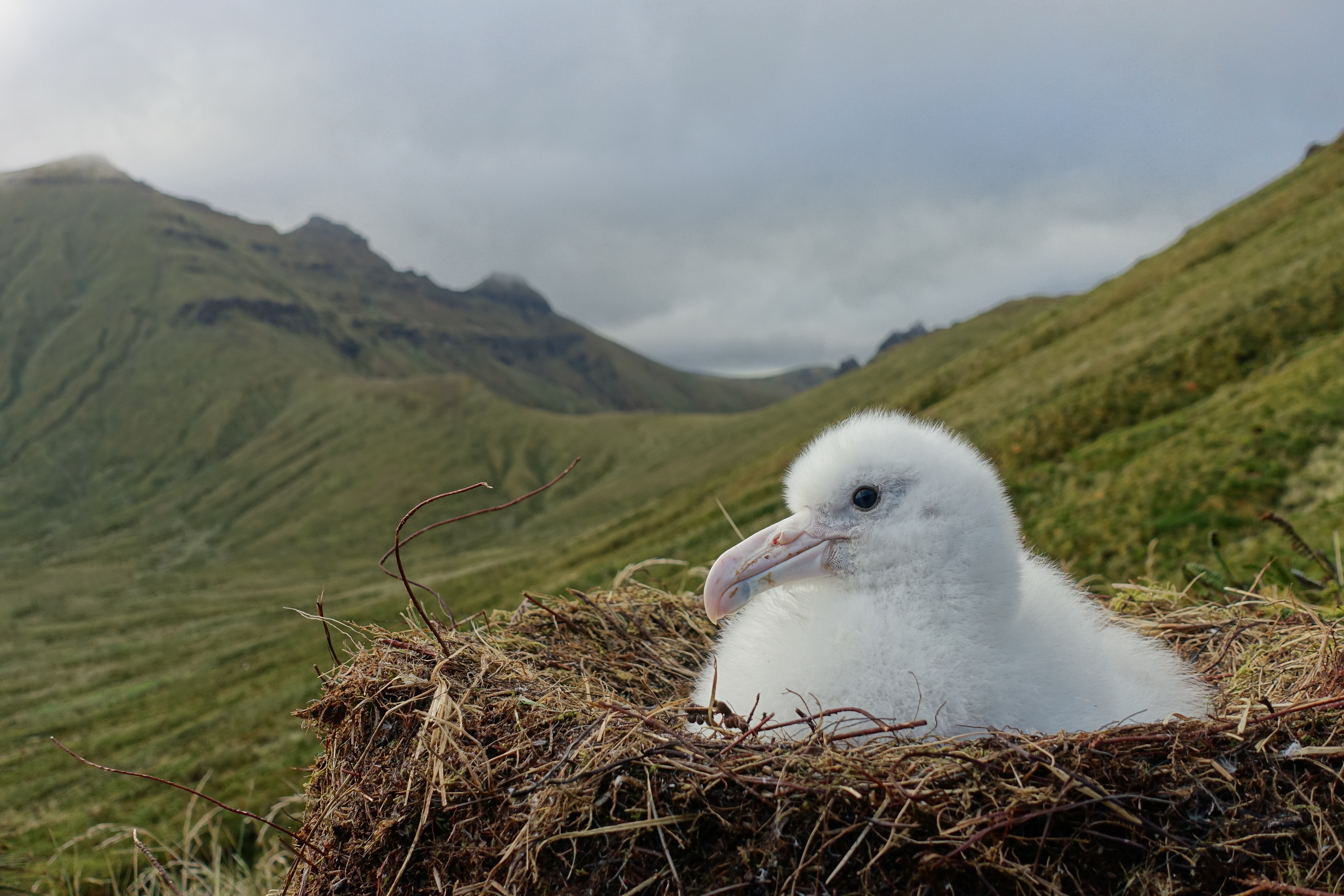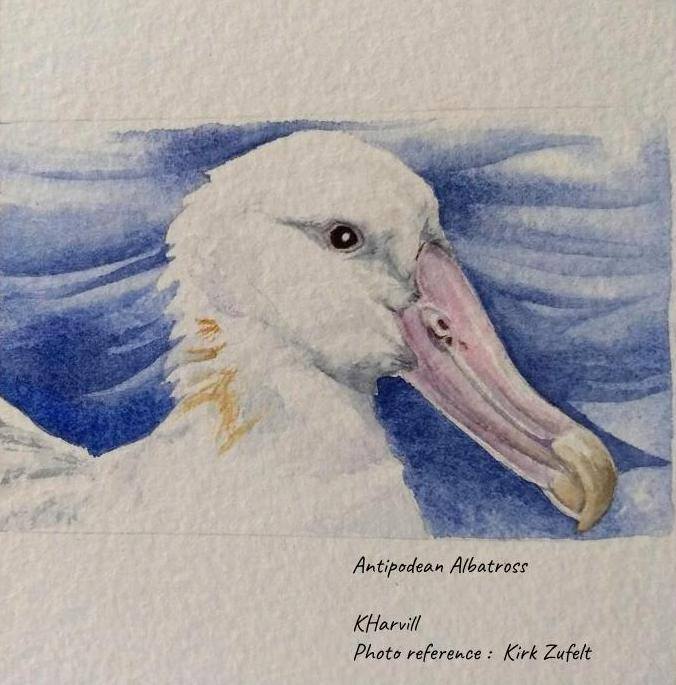
Antipodean Albatross, artwork by Kitty Harvill of ABUN for ACAP, from a photograph by Kirk Zufelt
Samhita Bose and Igor Debski (Department of Conservation, Wellington, New Zealand) have reported to the department’s Conservation Service Programme on the second year of satellite tracking Nationally Critical and globally Endangered Antipodean Albatrosses Diomedea antipodensis from Antipodes Island to ascertain overlap with fisheries.
The report’s abstract follows:
“Bycatch in fisheries has been identified as the greatest known threat to the endangered Antipodean albatross (Diomedea antipodensis antipodensis), which is declining at 5% per year. Tracking birds to quantify overlap with fishing activity posing bycatch risk and identifying relevant fleets is a key conservation management task for the recovery of this population. We report on the second year of intensive satellite tracking, with 40 tags deployed on adult females and males during 2020, supplementing 63 tracked birds in 2019 (consisting of adult males, adult females, and juveniles). For each bird location obtained, we estimated the daily overlap with fishing effort, using individual vessel data derived by Global Fishing Watch from vessel monitoring systems. We made refinements to methods used to report on the 2019 tracking, including the use of updated fishing effort data sets and improved bird location filtering. Tag longevity was more consistent in 2020, providing information over the entire austral winter when most overlap with fishing activity occurs. These methods allowed us to quantify the overlap by geographic or jurisdictional area, year, season, and fishing fleet.
Over both years, overlap with fishing activity was highest for pelagic longline fishing effort, primarily in the high seas of the Western Pacific, particularly in the mid-Tasman Sea and north-east of New Zealand. Adult females had higher overlap with pelagic longline fishing effort compared to males, which corresponded to recent research showing a higher relative reduction in female survival as an important driver of the Antipodean albatross population decline. Overlap by flag-state fleet showed that the same key fleets overlapped Antipodean albatross in both years. Some individual vessels overlapped with as many as one third of tracked Antipodean albatross in either year. In 2020, foraging ranges of birds extended further north than in 2019, with birds travelling up to 21°S, where there are no mandatory requirements for seabird bycatch mitigation use by relevant Regional Fisheries Management Organisations. Individual birds may overlap with as many as 88 different pelagic longline fishing vessels per year, increasing their potential exposure to bycatch risk. A range of effective and proven seabird bycatch mitigation options are readily available, and we identified the ports used by vessels that overlapped with tracked birds to facilitate bycatch reduction outreach efforts to these vessels.
Further tracking of Antipodean albatross in 2021 and beyond will provide for an expanded dataset to further improve our understanding of interannual variation and provide greater certainty on the range of fisheries that may pose potential bycatch risk to this endangered seabird.”
Access the previous report for 2019 from here.
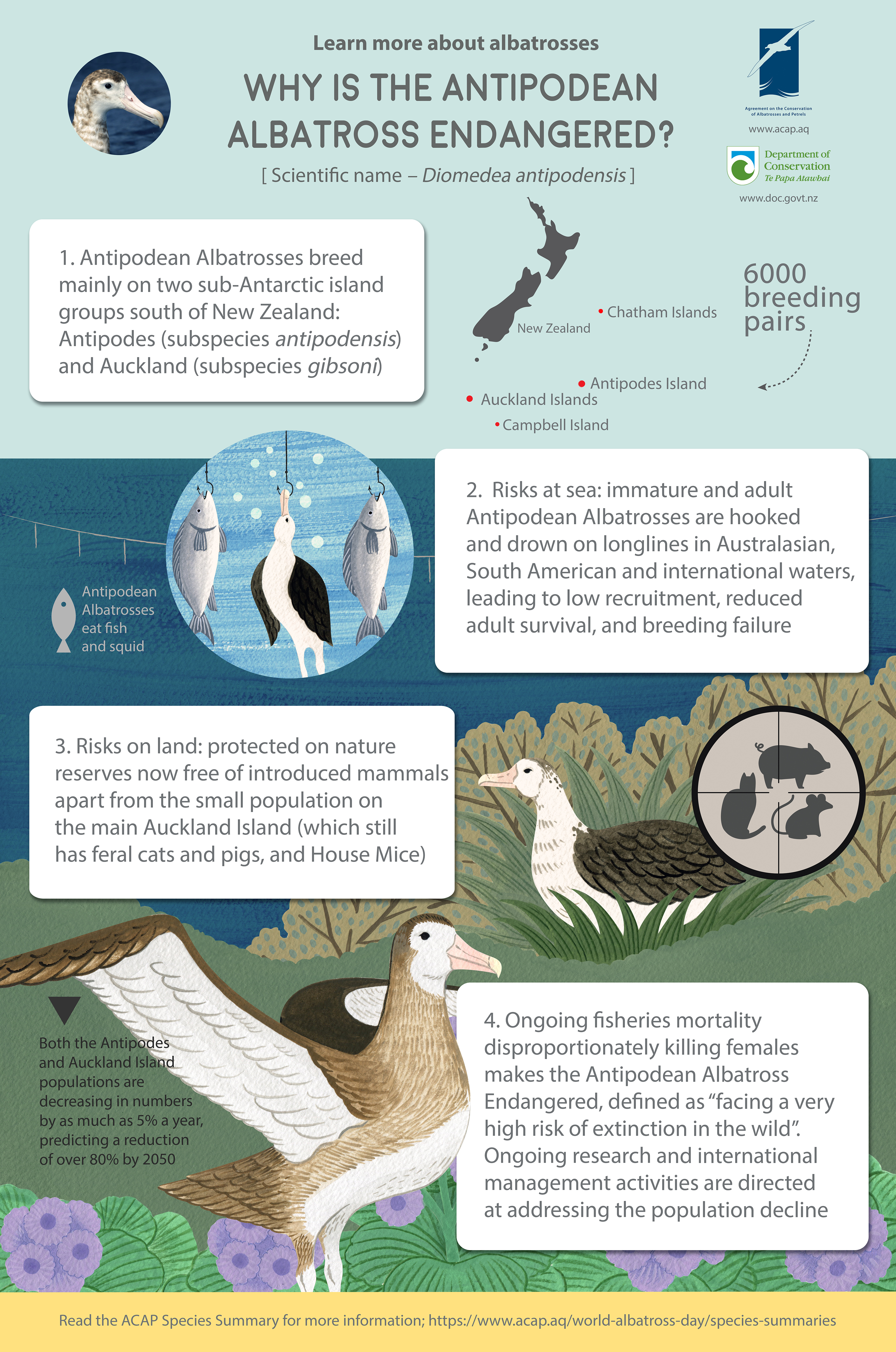
See the newly released ACAP/DOC infographic for the beleaguered Antipodean Albatross and click here to view a graphic depiction of the interactions of tracked juvenile Antipodean Albatross White 44J from Antipodes Island with the Taiwanese longliner Kuan Huang Fa that ultimately led to her demise.
Reference:
Bose, S. & Debski, I. 2021. Antipodean albatross spatial distribution and fisheries overlap 2020. Wellington: Department of Conservation. 36 pp. A set of supplementary data tables containing input data and detailed overlap results are available on request.
John Cooper, ACAP Information Officer, 25 October 2021

 English
English  Français
Français  Español
Español 